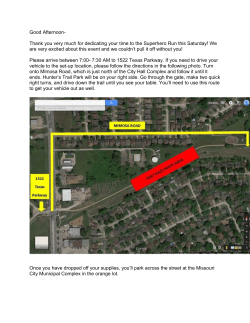
ELECTROMAGNETIC COMPATIBILITY TESTING IN AN ALL
ELECTROMAGNETIC COMPATIBILITY TESTING IN AN ALL‐ ELECTRIC VEHICLE Lennart E. Long and Charles R. Edelson with Stephen W. Sauter 3‐20‐15 EXECUTIVE SUMMARY •Purpose ‐ provide EMC awareness •Illustrate EMC process with examples •Good news for packaging people • Process for testing is UMTA Recommended Procedures • Advantages of testing a functioning vehicle vs. laboratory testing THE THREAT •Vehicle subsystems are increasingly becoming guide by wire. •Propulsion System emissions can affect the onboard and the wayside environment. •Non‐linear emissions can affect the on‐board systems (cell phones, games, tablets, signage). THE PROCESS • Electromagnetic Compatibility issues are addressed by the EMC consultant and the client agreeing on the objectives. • A proposed Test Plan (this spells out the requirements) is drafted by a consultant and reviewed and approved by the client. • Following Test Plan approval, a Detailed Test Procedure is prepared. This describes, step by step, every detail of the proposed testing. • EMC Field testing is performed. • The resulting data is analyzed to identify threats to vehicle subsystems as well as possible threats to the wayside. • A final report is prepared documenting operational compatibility of on‐board subsystems as well as vehicle compatibility with wayside receptors and radiators. INDUCTIVE EMC Inductive Emissions Measurement Use UMTA METHOD RT/IE01A. On‐ road vehicle must be tested with a large loop. COUPLING CIRCUIT (IF NEEDED) LOOP SENSOR WITH CLAMPS INDUCTIVE EMC Inductive interference is measured using a road loop which measures the voltage induced in that loop by the vehicle under test. CONDUCTIVE EMC Conductive Emissions Measurements Use Method RT/RC01A SPECTRUM ANALYZER PRINTER DIGITAL RECORDER CONDUCTIVE EMC A current sensor is placed on the output of the low voltage distribution network and measure any emissions which travel to all of the vehicle subsystems. These measurements have been taken on vehicles operated by catenary, third rail, battery, gasoline or liquid propane. RADIATED EMC Radiated Emissions Measurements Use Method RT/RE01A VEHICLE UNDER TEST RADIATED EMC This test is performed on both moving and stationary vehicles. This is what makes this so different from Lab testing of components. A fully assembled and functional vehicle cannot be tested at various speeds and loads in a screen room or shielded facility. ON THE ROAD VEHICLES • Vulnerability of today’s cars • Real Future Threats • Hacker Threat – Automotive EMI • Communications with other vehicles • EMC with the wayside and other vehicles and within the vehicle • Emanations caused by packaging designs? • Emanations from other vehicles • Emanations to the traffic control loops SUMMARY Welcome to the ever changing world of electromagnetic reality. We, all of us, are both the cause, result, and the victims of this environment. CONTACT INFORMATION Lennart E. Long, Engineering Consultant Transportation Electromagnetic Compatibility LenLong and Associates Owner, Treasurer US DOT Technical Consultant ‐ Rail Inspection 22 Abbott Road Waltham, MA 02452‐7840 781‐894‐3943 office/laboratory 781‐249‐5041 cell l.long1@comcast.net l.long@juno.com
© Copyright 2025













